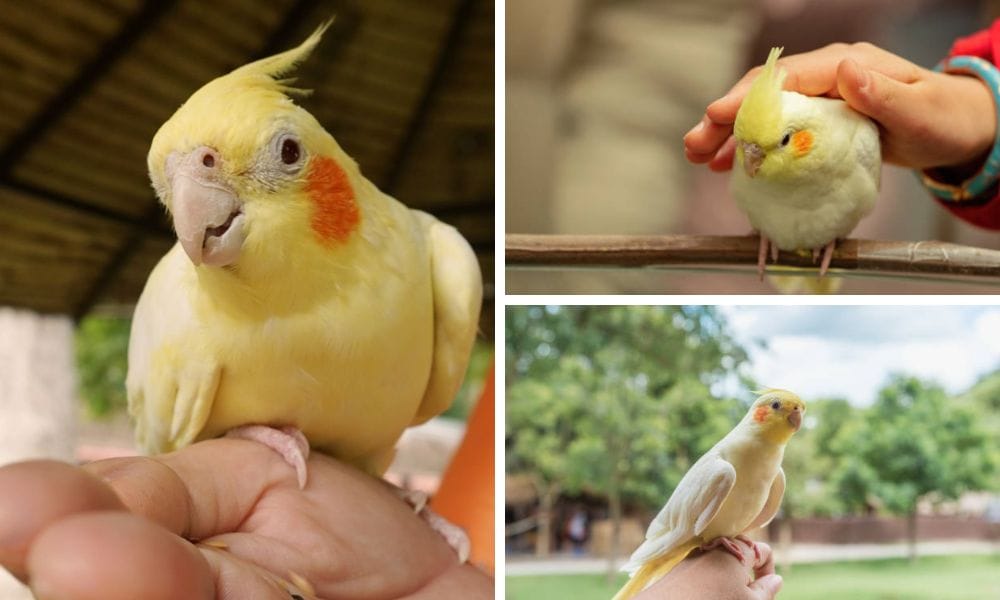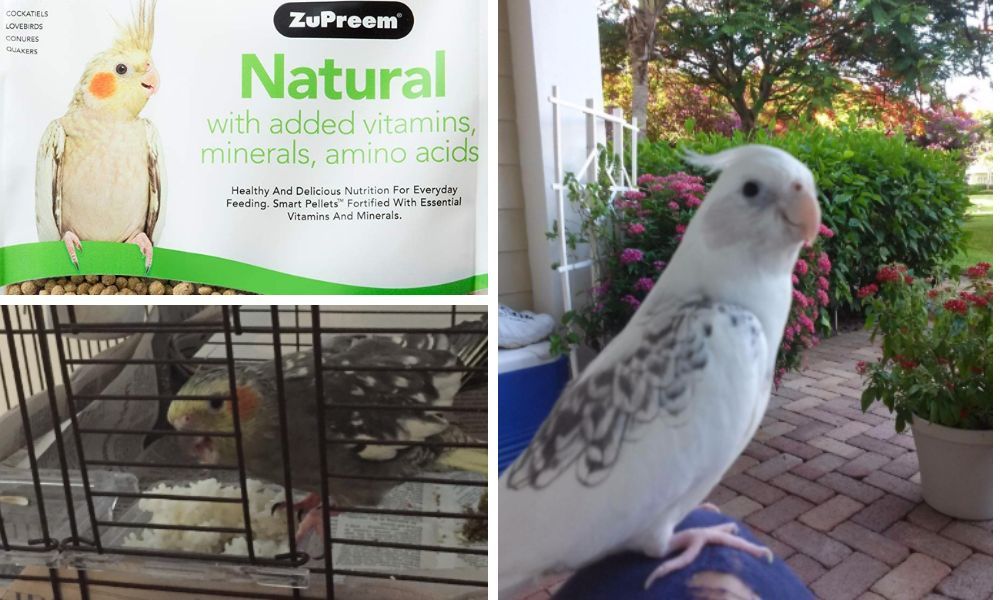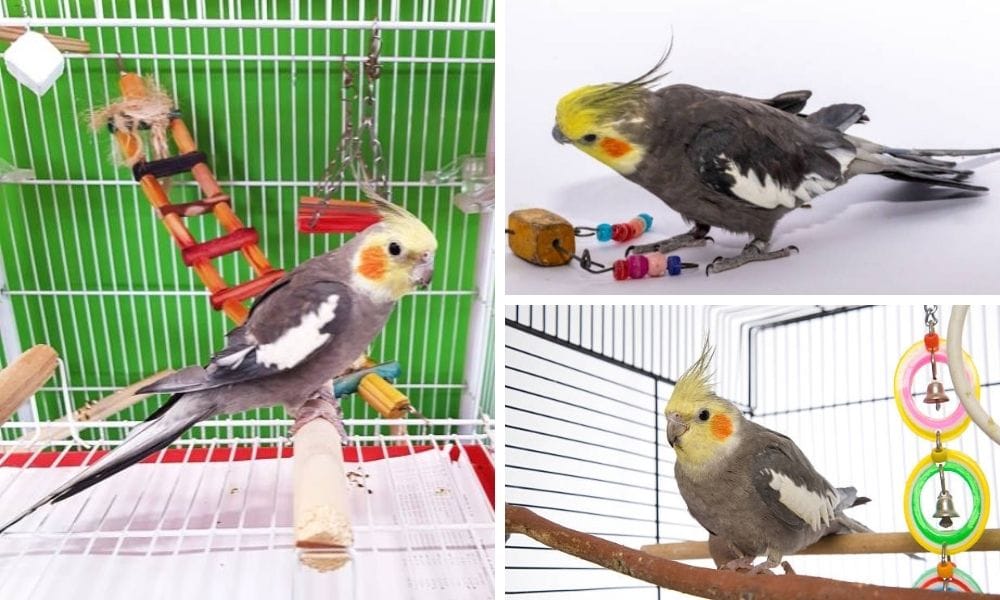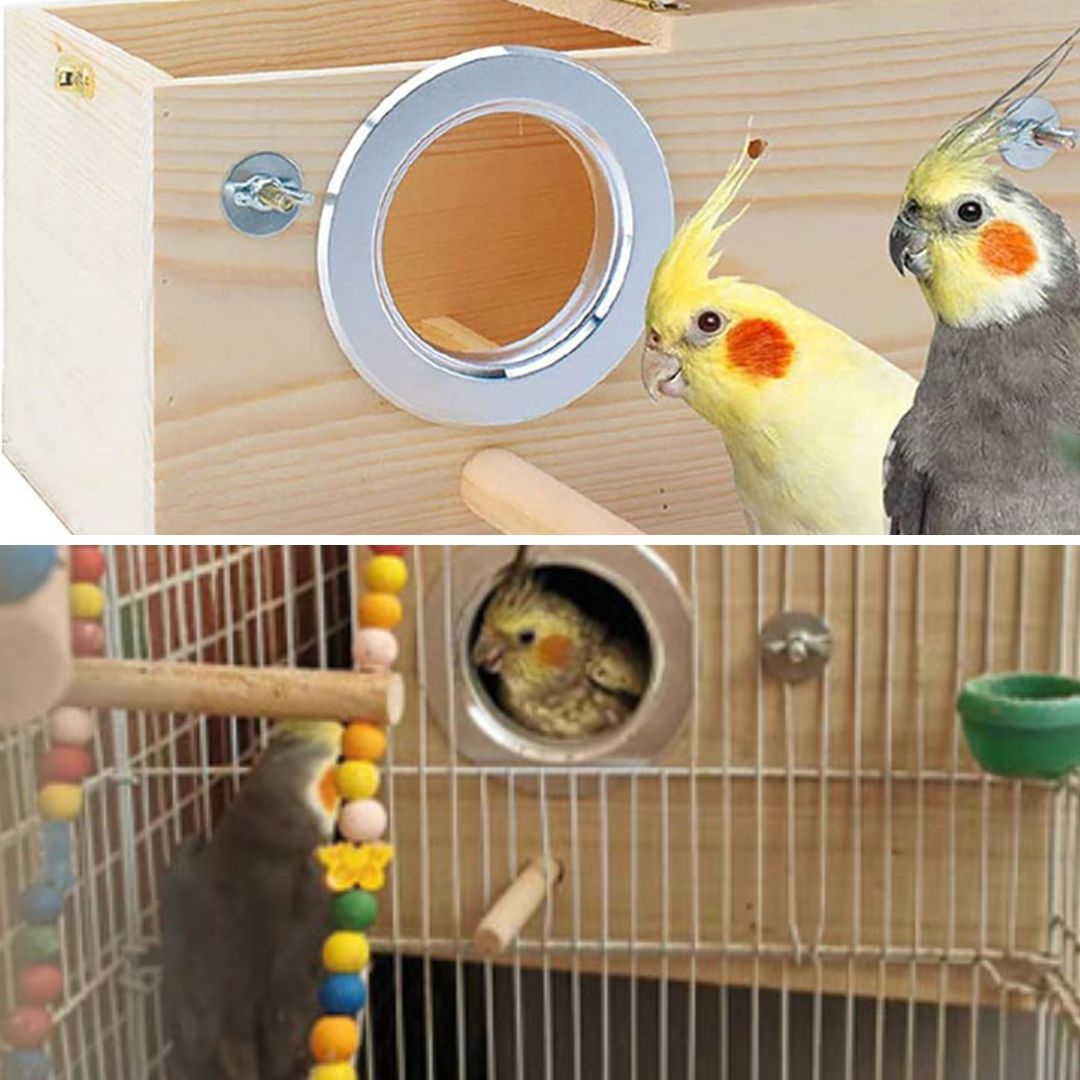Why the Lutino Cockatiel Makes a Great Pet: A Detailed Overview
Dive into why the Lutino Cockatiel makes a great pet, exploring its charming traits and easy care requirements in detail. Enjoy reading!

Key Takeaways:
Lutino cockatiels are known for their striking white plumage and red eyes, making them a visually appealing pet. These birds are friendly, intelligent, and can be a good choice for first-time bird owners due to their manageable size and temperament. Proper care, including a balanced diet, social interaction, and mental stimulation, is essential for a healthy and happy lutino cockatiel.
Lutino cockatiels have captured the hearts of avian enthusiasts around the world with their stunning appearance and endearing personalities. As the second cockatiel mutation to be discovered, the lutino cockatiel mutation is characterized by distinctive white to light-yellow feathers and vibrant orange/red cheek patches. This mutation has a rich history in aviculture, being one of the earliest established mutations in the United States, and continues to be a popular choice for pet owners. But what exactly makes the lutino cockatiel such a great companion? Let’s dive into the details.

What is a Lutino Cockatiel?
A Lutino Cockatiel is a captivating mutation of the Cockatiel bird breed, celebrated for its striking white to pale yellow feathers and stunning orange cheek patches. This unique coloration is the result of the lutino mutation, a sex-linked recessive trait carried on the X chromosome. Interestingly, this mutation is more commonly found in females than males. Lutino Cockatiels are a product of selective breeding by dedicated bird breeders and are not naturally found in the wild. Their eye-catching appearance and charming personality make them a favorite among bird enthusiasts.
A Splash of Sunshine: The Lutino Mutation
The lutino gene is responsible for the breathtaking white and yellow plumage that sets these birds apart from their grey counterparts. This color mutation, first bred by Cliff Barringer, is a result of albinism that eliminates the grey pigment, leaving a bird with a warm, sunny appearance. However, it is important to note that there is technically no such thing as an albino cockatiel; the appearance of solid white cockatiels with red eyes is actually due to a combination of lutino and white face mutations. Lutino coloration is the second cockatiel mutation after the pied version. The lutino cockatiels often have a mix of white and yellow feathers, with the males showcasing a brighter yellow face and orange cheek patches. Certain mutations, such as the 'white face' mutation, can exhibit distinct white markings in areas where color is typically present.
Physical Characteristics and Genetics
Lutino Cockatiels are easily recognizable by their unique physical traits. They boast a beautiful blend of white to light-yellow feathers, complemented by their signature orange cheek patches and captivating red eyes. These medium-sized birds typically measure around 12 inches in length and weigh between 75 to 125 grams. Their long, slender tail feathers and distinctively shaped flight feathers add to their graceful appearance. The lutino mutation, which affects melanin production, is responsible for their characteristic coloration. This genetic variation results in the absence of grey pigment, giving them their stunning white to light-yellow plumage.
Red Eyes, Stunning Orange Cheek Patches, and Rare Beauty
One of the most distinctive features of lutino cockatiels is their captivating red eyes. This trait is a direct result of the lutino mutation, which also affects the color of their eyes. While some may find the red eyes unusual at first, they are a hallmark of the lutino’s unique charm and contribute to their overall exotic look.
In contrast, the wild type cockatiel has primarily grey plumage with white wing flashes, which is the most common and natural appearance of cockatiels.

Perfect for First-Time Bird Owners
For those considering a feathered friend for the first time, lutino cockatiels are an excellent choice. Their smaller size compared to other parrots makes them less intimidating and easier to manage. Additionally, their inquisitive and friendly nature means they tend to bond well with their owners, making the experience of keeping a bird rewarding and interactive. Despite their smaller size, lutino cockatiels belong to the parrot family, sharing many unique features and behaviors with larger parrot species.
Social and Intelligent Companions: The Personality of Lutino Cockatiels
Lutino cockatiels are not just pretty faces; they are also known for their intelligent and social behavior. They enjoy being part of the family and will often seek out interaction with their human companions. Whether it's learning to whistle a new tune or exploring their surroundings, these birds are always interested in what's going on around them.

Personality and Temperament
Lutino Cockatiels are renowned for their friendly and outgoing personalities. These affectionate and playful birds thrive on social interaction, making them wonderful companions. Highly intelligent, they can be taught to perform a variety of tricks, mimic sounds, and even learn a few words or phrases. However, their social nature means they can be prone to behavioral problems if left alone for extended periods. Regular socialization and attention are essential to keep them happy and well-adjusted. Their engaging personalities make them a joy to have around, whether you’re a first-time bird owner or an experienced aviculturist.
Care and Housing
Providing the right care and housing for your Lutino Cockatiel is crucial for their well-being. They require a spacious cage with plenty of room to fly, exercise, and play. The cage should be well-ventilated and maintained at a comfortable temperature range of 65-75°F (18-24°C). Equip the cage with perches, food and water bowls, and a variety of toys to keep them entertained and stimulated. A balanced diet is essential, consisting of whole grains, vegetables, and occasional fruits. Fresh water should always be available, and dietary supplements like cuttlebones can help provide necessary calcium. Ensuring a proper living environment will keep your Lutino Cockatiel healthy and happy.
The Importance of a Balanced Diet
A healthy lutino cockatiel requires a balanced diet consisting of seeds, pellets, and a variety of fresh foods. Incorporating fruits and vegetables into their meals ensures they receive the necessary nutrients to maintain their vibrant feathers and overall health. Regularly offering a mix of foods will keep your lutino cockatiel both happy and healthy

The Fascinating World of Color Mutations in Cockatiels
Have you ever wondered how lutino cockatiels get their stunning yellow plumage? It’s all down to color mutations, which are quite the spectacle in the avian world. Lutino is just one of the many variations that have been bred from the wild grey cockatiels. These mutations include albino, pied, cinnamon, pearl, and whiteface, each with its unique charm. Pearl cockatiels, for example, are a common mutation and not as rare as some might believe. Male lutino cockatiels often boast a more vibrant hue, making them a popular choice for those looking to add a splash of color to their lives.
Interestingly, these color mutations don’t just make for pretty pets; they can also help owners identify the sex of their birds. For instance, females often have subtle markings under their wings, which are not as obvious in males. This can be particularly helpful for first-time bird owners who may not be familiar with other sexing methods. Watching these smaller birds flaunt their colors is a delight, and it’s fascinating to see how selective breeding has brought such diversity to our homes.

Training and Bonding with Your Lutino Cockatiel
Training your lutino cockatiel can be a rewarding experience for both you and your feathered friend. These birds are known for their intelligence and can learn a variety of tricks and commands. First-time bird owners will be pleased to know that lutino cockatiels, like many smaller birds, can be trained to step up onto your hand, mimic sounds, and even play fetch with the right approach and patience. It’s a great way to bond with your pet and provide the mental stimulation they crave. Training and socialization should start early with baby cockatiels to ensure they grow into well-adjusted adults.
But it’s not just about teaching them tricks; training also involves socialization and helping your bird feel comfortable in their environment. Male lutino cockatiels, in particular, can be quite outgoing and may enjoy interacting with their human family members. By spending time each day training and playing with your cockatiel, you’ll develop a deep and trusting relationship. Just grab some of their favorite food or fruit as a treat, and watch as your boy or girl learns and grows in confidence.

Mental Stimulation and Playtime
To keep your lutino cockatiel mentally stimulated, it's important to provide a variety of toys and activities. Toys that encourage foraging, such as those with bells or hidden treats, can keep them entertained for hours. Additionally, training sessions throughout the week can strengthen your bond and keep their minds sharp.

Exercise and Playtime
Lutino Cockatiels need plenty of exercise and playtime to stay happy and healthy. Regular time out of their cage is essential, allowing them to fly, stretch, and explore. Providing a range of toys, such as bird swings, paper and cardboard toys, and interactive items, can keep them entertained and mentally stimulated. These birds also love to play with their owners, so regular interaction and playtime are crucial. Aim for a minimum of 2 hours of exercise and playtime outside of their cage each day. This not only keeps them physically fit but also strengthens the bond between you and your feathered friend.
Understanding Lutino Cockatiel Behavior
Observing your lutino cockatiel's behavior is key to ensuring their well-being. Signs of a healthy bird include active chirping, preening, and playful interaction with toys. Conversely, a lack of activity or changes in behavior can be a sign that something is amiss, prompting a visit to the vet.

Breeding Lutino Cockatiels
Breeding lutino cockatiels can be a rewarding experience for those interested in aviculture. It’s important to note that the lutino gene is recessive, meaning that both parents must carry the gene for the offspring to exhibit the lutino mutation. A proper breeding setup, including a nest box and a quiet environment, is essential for success. However, identifying whether a cockatiel is split to certain mutations can be challenging, and even a lutino male may not produce the desired genetic traits when paired with other birds, illustrating the complexities of breeding and genetics in cockatiels.

The Joy of a Second Cockatiel
Many lutino cockatiel owners find that their pet enjoys the company of a second cockatiel. Introducing another bird can provide companionship and reduce loneliness, especially if the owner’s schedule doesn’t allow for constant interaction. When introducing a new bird, it’s crucial to do so gradually to ensure a smooth transition and a harmonious relationship. A white face cockatiel can be a good companion for a lutino cockatiel.
Caring for Their Crest and Feathers
The crest and feathers of a lutino cockatiel require regular care to stay healthy and beautiful. Regular baths or misting can help keep their feathers clean and in good condition. Additionally, providing a cage with enough space for them to spread their wings and fly will help prevent feather damage and promote exercise.
Summary
The lutino cockatiel is a delightful pet that offers a unique combination of beauty, intelligence, and affection. Their striking white plumage with yellow highlights and red eyes make them a visually appealing addition to any home. As social and inquisitive birds, they thrive on interaction and mental stimulation, making them perfect for first-time bird owners. With proper care, including a balanced diet and regular playtime, lutino cockatiels can be a joyful and engaging companion for many years. The yellow cockatiel, particularly the lutino variation, is popular due to its distinct look and relatively easy care requirements.

FAQ Section
Q: Are lutino cockatiels rare? A: Lutino cockatiels are not considered rare, but they are a sought-after color mutation. They are widely available through breeders and pet stores.
Q: Can lutino cockatiels talk? A: While lutino cockatiels are not known for their talking ability like some larger parrot species, they can learn to mimic sounds and whistle tunes. Males tend to be more vocal and are more likely to learn to talk or whistle.
Q: How can I tell if my lutino cockatiel is male or female? A: The difference between male and female lutino cockatiels can be subtle, but generally, males have a brighter yellow face and may exhibit more vocal behavior. DNA testing is the most accurate way to determine the sex of your bird.

